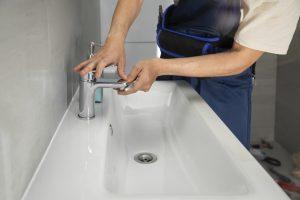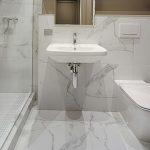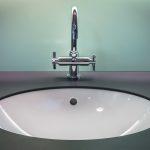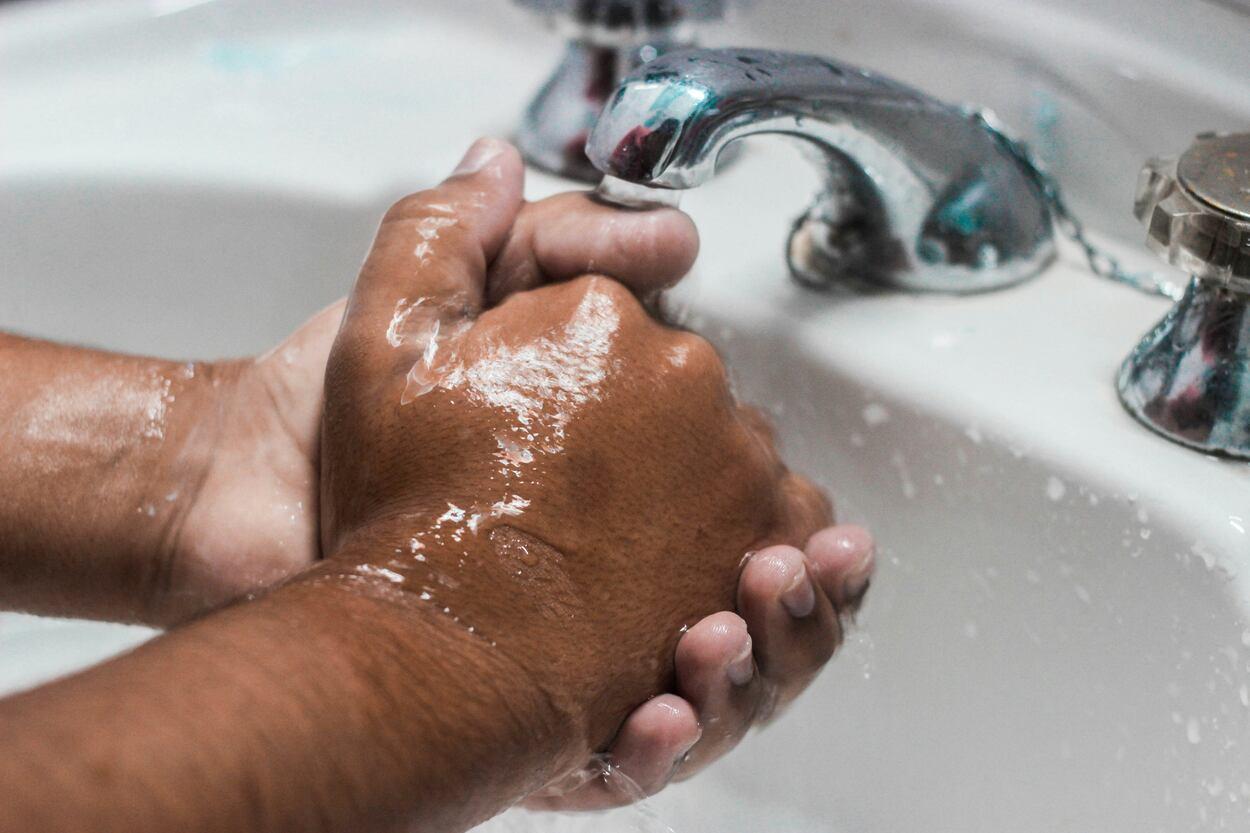Do you feel that your bathroom tap has seen better days and it’s time for an upgrade? You’re tempted to muster all your DIY skills but wondering if a plumber would deliver a more efficient and reliable job? Let’s explore this in more detail.
Contents
- Plumber’s Role in Tap Installation
- Telltale Signs for Tap Replacement
- DIY Versus Professional Tap Installation
- Necessary Expenses for Self Tap Replacement
- Money-Saving Advice for New Taps
- Factors Leading to Tap Damage
- Cost Breakdown for Tap Installation
- Sink Tap Installation Price
- Steps to Self-Install Sink Tap
- Tap Installation: Making The Decision
- Concluding Thoughts
Plumber’s Role in Tap Installation
Although installing a new tap might seem straightforward, this task can sometimes be harder than it looks. The coordinated expertise of a plumber is often required to avoid potential problems down the track. According to professional plumbing service Roto-Rooter, about 85% of plumbers have access to specialised tools for each job making installation easier and quicker than the average homeowner could manage.
Time is an important element in our busy lives. A plumber typically installs a new bathroom tap within 1-2 hours, thanks primarily to their skills and vast experience in handling all sorts of plumbing issues. On the other hand, a DIY installation could take much longer – potentially 3-4 hours or more depending on your experience and the complexity of the installation process.
Telltale Signs for Tap Replacement
The most common signs that it may be time for a tap replacement include persistent dripping, water leaks, rust, or sediment build-up. If your tap is consistently causing these problems it might prove more economical in the long run to replace it than continually paying for repair costs.
Taps age differently depending on their quality, usage intensity, and water hardness. Hard water accelerates wear and tear due to limescale deposits. Monitor your taps continuously so you can spot signs necessitating replacement before they escalate into larger plumbing emergencies.
DIY Versus Professional Tap Installation

Doing your bathroom tap installation is tempting, especially when you consider the initial cost savings. However, that can quickly change if things go wrong. In fact, estimates suggest over 30% of homeowners who attempt a DIY tap installation end up needing professional assistance due to unexpected issues.
A comparison of DIY and professional tap installations indicates a higher error rate for DIY jobs. Up to 20-25% of DIY installations might require redoing because of leaks or other complications due to incorrect fitting. Professional plumbers, on the other hand, have reported low call-back rates (under 5%), demonstrating a high success rate at first attempt.
Necessary Expenses for Self Tap Replacement
Choosing DIY means incurring costs for tools and materials alongside committing several hours to undertake the job. The average cost for purchasing a new tap varies considerably depending on the design, model, and brand you opt for. Additionally, you might also need to purchase some basic plumbing tools if you don’t have them already.
Besides these purchases, remember not all costs are monetary when doing a DIY project. Your time is precious; spending hours underneath your sink might be frustrating if plumbing isn’t your strong suit. This is why some people opt to hire a professional plumber despite the higher upfront cost.
Money-Saving Advice for New Taps
When it comes to buying a new tap, aiming for high quality over low price could be a money-saving strategy in the long run. Try finding something durable and sustainable that will serve you well in terms of lifespan and operation even if it means spending a few more bucks than initially planned.
Consider seeking advice from experienced professionals like your local plumber before embarking on your purchase; they should provide you with insights regarding different tap brands and their pros and cons. This could assist you in making a more informed decision instead of directly being influenced by flashy commercials.
Factors Leading to Tap Damage
Various factors can accelerate tap damage such as water quality, overuse, build-up of sediments and mineral deposits. All these contribute to the wear and tear of your taps, leading to frequent breakdowns. Furthermore, incorrect DIY installation can lead to issues that ultimately shorten the lifespan of your tap.
Avoiding tap damage mostly comes down to regular maintenance combined with appropriate use. Having a professional plumber come in for routine checks can be beneficial as they’re likely to spot potential issues early before they escalate into major concerns.
Cost Breakdown for Tap Installation
If you’re thinking about installing a new bathroom tap, the cost is probably one of the things on your mind. The total price often depends on various factors like your location and the complexity of the installation. At Dan’s Plumbing, we operate within the Aussie metric system, which means our prices are tailored to the local economy.
The standard plumbing rates often include the cost of materials and labour. A prime example for understanding this would be Roto-Rooter, a massive plumbing and drain service business, whose costs can offer a general guide to what you might spend. Here at Dan’s Plumbing, we aim to provide competitive prices while maintaining excellent service.
Sink Tap Installation Price
When it comes to installing a sink tap specifically, there are specific factors to consider. The design of tap (valve) you choose can influence both the cost and complexity of the installation. Remember, high-end models require specialist knowledge and sometimes additional fittings, increasing your overall price.
Another cost factor is whether any existing plumbing needs to be adjusted or repaired before installation. If your bathroom plumbing requires attention from our professional plumbers, this too will be factored into the final cost calculation. We aim to be transparent about these costs to prevent unpleasant surprises.
Steps to Self-Install Sink Tap

Installing a new sink tap can be quite an undertaking without proper knowledge and tools. But if you’re considering DIY installation, here are some steps to guide you:
- Firstly, turn off the water supply to avoid flooding accidents.
- Remove your old tap (valve) with an adjustable wrench.
- Clean the area around the sink holes.
- Follow the manufacturer’s instructions to install the new tap.
- Finally, turn the water supply back on and check for leaks.
Note that while these are the standard steps, different tap designs might require additional measures. Generally, DIY is recommended for those confident in their plumbing skills. If unsure, it’s always safer to consult a professional.
Tap Installation: Making The Decision
Deciding between a DIY installation or hiring a plumber is a significant decision. There are certain advantages and disadvantages of each side that should be considered carefully. A successful DIY saves you on labour costs but does come with risks of incorrect installation or possible bathroom flooding. In contrast, a professional plumber offers peace of mind and guarantees high-quality work.
We at Dan’s Plumbing recommend assessing your personal confidence and ability in plumbing jobs before making your decision. A new bathroom tap should enhance your comfort, not cause headaches due to complications or errors during installation.
Concluding Thoughts
In conclusion, installing a new bathroom tap involves factors such as cost considerations, whether to opt for a professional service like Dan’s Plumbing or do it yourself, part precision, and careful planning. With all these factors at play, making an informed decision is crucial for a clean and successful installation. Don’t forget we’re here if you need help along the way!
- Can I Get a Plumber to Help Me Install An Under Sink Water Boiler in Our Office Kitchen? - September 14, 2024
- Can a Plumber Help Me Clear a Badly Clogged Toilet? - September 4, 2024
- Can a Plumber Help Me to Replace a Bathtub Drain Stopper? - August 29, 2024
Related posts:
 Can a Plumber Install a Ventilation Fan in My Bathroom? Or Is That a Job For a Licensed Australian Electrician?
Can a Plumber Install a Ventilation Fan in My Bathroom? Or Is That a Job For a Licensed Australian Electrician?
 Can a Plumber Help Me Install a Water-Saving Toilet in My Older Melbourne Bathroom?
Can a Plumber Help Me Install a Water-Saving Toilet in My Older Melbourne Bathroom?
 Can a Plumber Help Me Replace a Bathroom Sink Tap And How Long Will It Take?
Can a Plumber Help Me Replace a Bathroom Sink Tap And How Long Will It Take?
 Can a Plumber Help Me Install a Whole House Water Filter?
Can a Plumber Help Me Install a Whole House Water Filter?
 Can Your Plumbers Help Me Install a Dishwasher?
Can Your Plumbers Help Me Install a Dishwasher?
 Can a Plumber Help Me Replace a Kitchen Sink Sprayer?
Can a Plumber Help Me Replace a Kitchen Sink Sprayer?



